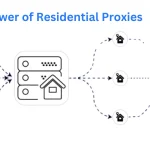In the dynamic landscape of today’s digital world, innovation thrives on the relentless pursuit of new ideas. However, the true test lies not just in conceiving these ideas but in bringing them to life. Transform ideas into applications require a blend of creativity, strategy, and technical expertise. In this article, we delve into the journey of turning ideas into applications, exploring the key steps and considerations along the way.
Ideation: Nurturing the Seed of Innovation
In application development, ideation serves as the cornerstone upon which transformative digital experiences are built. It’s the spark that ignites the journey from concept to creation, guiding innovators towards solutions that resonate with users and address pressing needs. Let’s delve deeper into the crucial phase of ideation and how it lays the groundwork for turning abstract ideas into tangible applications.
Understanding the Problem Landscape
At the heart of every successful application lies a profound understanding of the problems it seeks to solve. Ideation begins with identifying pain points, challenges, or unmet needs within a specific domain or target audience. This requires keen observation, empathetic listening, and a willingness to delve into the intricacies of user experiences.
Brainstorming and Creative Exploration
Once the problem landscape is delineated, the ideation process kicks into high gear through brainstorming sessions and creative exploration. This phase encourages divergent thinking, where no idea is too outlandish or impractical. It’s a playground of possibilities, where innovative solutions emerge from the fertile soil of collaboration and open-mindedness.
Market Research and User Insights
Ideas, however brilliant, must withstand the scrutiny of real-world constraints and user preferences. Market research and user insights serve as invaluable compasses, guiding ideators towards concepts that are not only innovative but also viable and relevant. Understanding market trends, competitor offerings, and user behaviors provides invaluable context for refining and validating ideas.
Prototyping and Iterative Refinement
Ideas truly come to life when they’re manifested into tangible prototypes. Prototyping allows ideators to visualize their concepts, experiment with different features and functionalities, and gather feedback from stakeholders and potential users. This iterative refinement process is crucial for honing ideas, identifying potential pitfalls, and aligning the vision with user expectations.
Cultivating a Culture of Innovation
Ideation isn’t just a one-time event—it’s a continuous journey fueled by curiosity, experimentation, and a willingness to challenge the status quo. Cultivating a culture of innovation within organizations encourages employees to think outside the box, share their ideas openly, and collaborate across disciplines. By fostering an environment where creativity thrives, organizations can unlock a wealth of untapped potential and drive meaningful change.
Embracing Failure as a Stepping Stone
In the pursuit of innovation, failure is not an endpoint but a stepping stone towards progress. Not every idea will blossom into a successful application, and that’s okay. Embracing failure as a natural part of the ideation process encourages risk-taking, resilience, and a willingness to learn from mistakes. Each setback offers valuable lessons that inform future iterations and ultimately pave the way towards breakthroughs.
Key Considerations:
Identify the Problem: Understand the pain points or gaps in the market that your application aims to address.
Define the Target Audience: Determine who will benefit from your application and tailor the concept accordingly.
Research and Validate: Conduct thorough market research and gather feedback to validate the viability and relevance of your idea.
Planning: Charting the Course
In application development, planning serves as the compass that guides teams through the complex terrain of turning ideas into reality. It’s the strategic roadmap that ensures projects stay on course, resources are allocated efficiently, and goals are achieved within the designated timeline. Let’s explore the critical phase of planning and how it lays the foundation for transforming abstract concepts into fully-fledged applications.
Defining Clear Objectives and Scope
At the onset of the planning phase, it’s imperative to define clear objectives and scope for the project. This involves outlining the overarching goals, desired outcomes, and key deliverables that will define success. By establishing a well-defined scope, teams can ensure alignment and avoid scope creep, which can lead to project delays and budget overruns.
Identifying Stakeholders and Roles
Successful application development requires collaboration and coordination among diverse stakeholders, each bringing unique perspectives and expertise to the table. During the planning phase, it’s essential to identify key stakeholders, including project sponsors, developers, designers, and end-users, and clarify their roles and responsibilities. Clear communication channels and decision-making processes are essential for fostering synergy and accountability within the team.
Estimating Resources and Timeline
Resource allocation and timeline estimation are critical aspects of effective project planning. This involves identifying the human, financial, and technological resources required to execute the project successfully. By conducting thorough resource assessments and leveraging project management tools, teams can ensure optimal resource utilization and mitigate potential bottlenecks that may impede progress.
Creating a Project Roadmap
A project roadmap serves as a visual guide that outlines the sequential steps and milestones involved in the application development process. It provides a holistic view of the project timeline, including key deliverables, dependencies, and checkpoints for monitoring progress. By breaking down the project into manageable phases and tasks, teams can maintain clarity and focus throughout the development lifecycle.
Risk Management and Contingency Planning
No project is without risks, and effective planning involves anticipating and mitigating potential obstacles before they escalate into issues. During the planning phase, teams should conduct risk assessments to identify potential threats to project success, such as technical challenges, resource constraints, or external dependencies. Developing contingency plans and mitigation strategies empowers teams to respond proactively to unforeseen circumstances and minimize project disruptions.
Adhering to Agile Principles
In today’s fast-paced and dynamic environment, agile principles have become synonymous with effective project management. Agile methodologies, such as Scrum or Kanban, emphasize iterative development, continuous feedback, and adaptability to changing requirements. By embracing agile principles during the planning phase, teams can foster collaboration, promote transparency, and respond nimbly to evolving stakeholder needs.
Key Considerations:
Define Requirements: Outline the features and functionalities of the application, prioritizing based on user needs and business objectives.
Set Milestones: Break down the project into manageable milestones to track progress and maintain momentum.
Allocate Resources: Determine the budget, timeline, and team members needed to execute the project effectively.
Design: Crafting the User Experience
In application development, design serves as the bridge between functionality and user engagement. It’s the art of translating complex ideas into intuitive interfaces, creating seamless experiences that captivate and delight users. Let’s explore the critical phase of design and how it shapes the user experience, elevating applications from mere tools to indispensable companions in the digital landscape.
Understanding User Needs and Behaviors
At the core of effective design lies a deep understanding of user needs, preferences, and behaviors. This entails conducting user research, gathering feedback, and empathizing with the end-users to uncover insights that inform the design process. By putting the user at the center of the design equation, designers can create experiences that resonate on a profound level and foster long-term engagement.
Creating Intuitive Interfaces and Navigation
The hallmark of great design is simplicity and clarity. Designers strive to create interfaces that are intuitive and easy to navigate, minimizing user cognitive load and friction. This involves thoughtful consideration of layout, hierarchy, and interaction patterns to guide users seamlessly through the application’s features and functionalities. Clear navigation pathways and intuitive controls empower users to accomplish tasks effortlessly, enhancing their overall experience.
Fostering Visual Appeal and Brand Identity
Visual aesthetics play a pivotal role in shaping user perceptions and brand identity. Designers leverage color palettes, typography, imagery, and visual elements to create cohesive and visually appealing interfaces that reflect the brand’s personality and values. Consistency in design elements and adherence to brand guidelines establish a sense of trust and familiarity, reinforcing the brand identity and enhancing brand recognition.
Prioritizing Accessibility and Inclusivity
Inclusive design is not just a moral imperative—it’s a fundamental aspect of creating experiences that are accessible to all users, regardless of their abilities or limitations. Designers strive to incorporate accessibility features, such as alternative text for images, keyboard navigation, and adjustable text sizes, to ensure that the application is usable by individuals with diverse needs. By prioritizing accessibility, designers can create truly inclusive experiences and empower all users to participate fully in the digital world.
Iterative Prototyping and User Testing
Design is an iterative process that thrives on feedback and iteration. Designers create prototypes to visualize their concepts and gather feedback from stakeholders and end-users through user testing sessions. These iterative cycles of prototyping and testing enable designers to refine their designs, uncover usability issues, and validate design decisions based on real-world user interactions. By embracing a user-centered approach, designers can create experiences that resonate deeply with users and drive meaningful engagement.
Embracing Responsive and Adaptive Design
In today’s multi-device world, designing for flexibility and responsiveness is paramount. Designers embrace responsive and adaptive design principles to ensure that the application looks and functions seamlessly across a wide range of devices and screen sizes. By optimizing layouts, content, and interactions for different viewing contexts, designers can deliver consistent and cohesive experiences that adapt fluidly to the user’s device preferences, enhancing accessibility and usability.
Key Considerations:
User-Centric Approach: Put the user at the center of the design process, focusing on usability, accessibility, and overall satisfaction.
Visual and Interaction Design: Create wireframes and prototypes to visualize the layout and functionality of the application before implementation.
Consistency and Branding: Maintain consistency in design elements and adhere to brand guidelines to establish a cohesive identity.
Development: Bringing the Vision to Life
Development is the transformative stage in the journey of application creation, where lines of code breathe life into conceptual designs. It’s the technical execution that turns abstract ideas into tangible realities, laying the groundwork for functional, scalable, and robust applications. Let’s delve into the critical phase of development and how it plays a pivotal role in bringing the vision to life.
Translating Design into Code
At the heart of development lies the task of translating design blueprints into functional code. Developers work closely with designers to understand the intricacies of the user interface and interaction patterns, ensuring that the visual aesthetics seamlessly integrate with the underlying functionality. This process involves writing clean, efficient code using appropriate programming languages, frameworks, and libraries, laying the foundation for a solid application architecture.
Implementing Core Functionality and Features
Development is where the core functionality and features of the application take shape. Developers leverage their technical expertise to implement features, such as user authentication, data management, and third-party integrations, that align with the project requirements and user needs. This phase requires meticulous attention to detail, as developers strive to create seamless, bug-free experiences that meet the highest standards of quality and usability.
Embracing Agile Methodologies
Agile methodologies have become the cornerstone of effective development practices in today’s fast-paced and dynamic environment. Developers embrace agile principles, such as iterative development, continuous integration, and adaptive planning, to deliver incremental updates and respond nimbly to changing requirements. By breaking down the development process into manageable sprints and conducting regular retrospectives, teams can maintain momentum and adapt their approach based on feedback and emerging insights.
Prioritizing Performance and Scalability
Performance and scalability are non-negotiable aspects of modern application development. Developers optimize code and architecture to ensure that applications perform reliably under varying loads and scale seamlessly to accommodate growing user bases. This involves fine-tuning database queries, optimizing resource usage, and implementing caching mechanisms to enhance responsiveness and reduce latency. By prioritizing performance from the outset, developers lay the groundwork for applications that can thrive in the face of increasing demands and complexities.
Integrating Testing and Quality Assurance
Testing is an integral part of the development process, ensuring that applications meet the highest standards of quality, reliability, and security. Developers collaborate with quality assurance engineers to implement comprehensive testing strategies, including unit testing, integration testing, and end-to-end testing, to identify and address any bugs, errors, or vulnerabilities. Automated testing frameworks and continuous integration pipelines streamline the testing process, enabling developers to catch issues early and deliver stable, bug-free releases.
Embracing Continuous Improvement
Development is not a one-time event but an ongoing journey of continuous improvement. Developers embrace a culture of learning, experimentation, and innovation, seeking opportunities to refine their skills, explore new technologies, and enhance the capabilities of their applications. By soliciting feedback from users, monitoring performance metrics, and staying abreast of industry trends, developers can iterate on their applications iteratively, delivering value and innovation with each update.
Key Considerations:
Choose the Right Technology Stack: Select the appropriate programming languages, frameworks, and tools based on the requirements of the project.
Follow Best Practices: Adhere to coding standards, version control, and testing methodologies to ensure code quality and reliability.
Iterative Development: Embrace an agile approach, allowing for continuous feedback, iteration, and refinement throughout the development process.
Testing and Quality Assurance: Ensuring Reliability
In application development, testing and quality assurance serve as the guardians of reliability, ensuring that applications meet the highest standards of performance, functionality, and security. It’s the meticulous process of scrutiny and validation that safeguards against errors, bugs, and vulnerabilities, ultimately fostering trust and confidence among users. Let’s explore the critical phase of testing and quality assurance and how it plays a pivotal role in ensuring the reliability of applications.
Comprehensive Testing Strategies
Testing begins with the formulation of comprehensive strategies that cover all aspects of the application’s functionality, usability, and performance. This includes various testing methodologies such as:
- Unit Testing: Testing individual components or modules in isolation to ensure they function as intended.
- Integration Testing: Testing the interaction between different components to ensure they work together seamlessly.
- Regression Testing: Testing to ensure that new code changes do not inadvertently introduce bugs or regressions into existing functionality.
- User Acceptance Testing (UAT): Involving end-users to validate whether the application meets their requirements and expectations.
- Performance Testing: Evaluating the application’s responsiveness, scalability, and reliability under varying load conditions.
- Security Testing: Assessing the application’s defenses against potential vulnerabilities and security threats.
Automation and Continuous Integration
Automation plays a crucial role in streamlining the testing process and accelerating time-to-market. Test automation frameworks enable developers to automate repetitive test cases, regression suites, and deployment pipelines, reducing manual effort and increasing efficiency. Continuous integration (CI) practices ensure that tests are run automatically whenever new code changes are introduced, enabling teams to catch issues early and maintain a high level of code quality throughout the development lifecycle.
Real-World Scenario Testing
Beyond traditional test cases, it’s essential to simulate real-world scenarios and user interactions to uncover potential edge cases and usability issues. This involves testing the application across different devices, browsers, and network conditions to ensure compatibility and accessibility for diverse user demographics. By embracing exploratory testing and user-centric approaches, testers can identify usability issues and gather valuable insights to improve the overall user experience.
Performance Optimization and Scalability Testing
Performance testing is critical for ensuring that applications can handle the expected load and provide a responsive user experience under peak traffic conditions. Testers simulate various load scenarios, stress test the application’s infrastructure, and analyze performance metrics to identify bottlenecks and areas for optimization. Scalability testing assesses the application’s ability to scale horizontally or vertically to accommodate growing user bases and increasing data volumes, ensuring that it remains reliable and responsive as it scales.
Security and Compliance Considerations
Security testing is paramount in today’s digital landscape, where data breaches and cyber threats pose significant risks to organizations and users alike. Testers assess the application’s resilience against common security vulnerabilities, such as SQL injection, cross-site scripting (XSS), and authentication flaws, and ensure compliance with industry standards and regulations, such as GDPR or HIPAA. Organizations can mitigate risks and build trust with their users by implementing robust security measures and conducting regular security audits.
Iterative Improvement and Feedback Loop
Testing and quality assurance are not one-time activities but ongoing processes of continuous improvement. Testers collaborate closely with developers, designers, and stakeholders to gather feedback, prioritize issues, and iterate on the application iteratively. By fostering a culture of quality and accountability, organizations can continuously refine their applications, address emerging challenges, and deliver value-driven solutions that exceed user expectations.
Key Considerations:
Comprehensive Testing: Conduct thorough testing across multiple devices, platforms, and scenarios to uncover any potential issues.
User Acceptance Testing: Involve real users in the testing process to gather feedback and validate the application’s usability and functionality.
Performance Optimization: Optimize the application for speed, responsiveness, and scalability to deliver a seamless user experience under varying conditions.
Also Read
Deployment and Maintenance: Launching and Beyond
Deployment and maintenance mark the culmination of the application development journey, yet they also signify the beginning of a new phase—a journey of continuous improvement, adaptation, and growth. From releasing the application into the wild to ensuring its longevity and relevance, deployment and maintenance are essential stages that determine the success and sustainability of the application in the ever-evolving digital landscape. Let’s explore the critical phase of deployment and maintenance and how it extends far beyond the initial launch.
Smooth Deployment Process
Launching an application into production involves a series of coordinated steps to ensure a smooth and seamless deployment process. This includes activities such as:
- Server Configuration: Setting up servers, databases, and other infrastructure components to support the application’s operation.
- Version Control: Managing code repositories and ensuring that the latest version of the application is deployed.
- Deployment Automation: Leveraging deployment automation tools and scripts to streamline the deployment process and minimize manual intervention.
- Rollback Procedures: Establish rollback procedures to revert to previous versions in case of deployment failures or issues.
Post-Deployment Monitoring and Optimization
Once the application is live, monitoring becomes essential to track its performance, stability, and usage patterns. Monitoring tools and analytics platforms provide valuable insights into key metrics such as:
- Performance Metrics: Response times, latency, and resource utilization to identify bottlenecks and optimize performance.
- User Engagement: User activity, retention rates, and conversion metrics to understand user behavior and improve the user experience.
- Error Tracking: Log files, error reports, and crash analytics to identify and address issues in real-time.
Continuous optimization is critical to ensure that the application remains responsive, scalable, and reliable over time. This involves:
- Performance Tuning: Fine-tuning infrastructure, database queries, and code optimizations to improve performance and reduce latency.
- Scalability Planning: Scaling infrastructure horizontally or vertically to accommodate growing user bases and increasing demand.
- Security Updates: Applying patches, updates, and security fixes to mitigate vulnerabilities and protect against emerging threats.
- Feature Enhancements: Iterating on existing features and introducing new functionalities based on user feedback and market trends.
User Support and Feedback Management
Providing excellent customer support is essential for maintaining user satisfaction and loyalty. Establishing channels for user feedback, bug reporting, and feature requests allows users to voice their concerns and suggestions. Timely responses and resolutions demonstrate commitment to customer satisfaction and foster trust in the application and brand.
Compliance and Regulatory Compliance
In industries governed by regulations and standards, ensuring compliance is paramount. Organizations must stay abreast of regulatory requirements, such as GDPR, HIPAA, or PCI DSS, and implement measures to protect user data, ensure privacy, and maintain compliance with legal obligations. Regular audits and assessments help validate compliance and mitigate risks of non-compliance.
Continuous Iteration and Innovation
The journey of deployment and maintenance is not static but dynamic, characterized by continuous iteration and innovation. By embracing an agile mindset and iterative approach, organizations can adapt to changing market dynamics, user needs, and technological advancements. Regular retrospectives, feedback loops, and iteration cycles enable teams to prioritize improvements, address technical debt, and seize opportunities for innovation.
Key Considerations:
Smooth Deployment: Ensure a seamless deployment process, including app store submission, server configuration, and version control.
Continuous Improvement: Gather user feedback, monitor performance metrics, and iterate on the application to enhance user experience and address any emerging issues.
Stay Updated: Keep abreast of industry trends, security threats, and platform updates to ensure the application remains secure, compatible, and competitive in the long run.
Conclusion: Empowering Innovation through Action
Transforming ideas into applications is not just about creativity—it’s about execution. By following a structured approach and leveraging the right mix of expertise and resources, innovators can breathe life into their concepts and make a tangible impact in the digital realm. From ideation to deployment and beyond, the journey of innovation is a testament to human ingenuity and the endless possibilities of technology. In the ever-evolving landscape of technology, the journey from idea to application is a testament to human ingenuity and the power of innovation. By nurturing ideas, embracing creativity, and leveraging the right mix of expertise and resources, innovators can turn their visions into reality, shaping the future of digital experiences and transforming the way we live, work, and connect.





